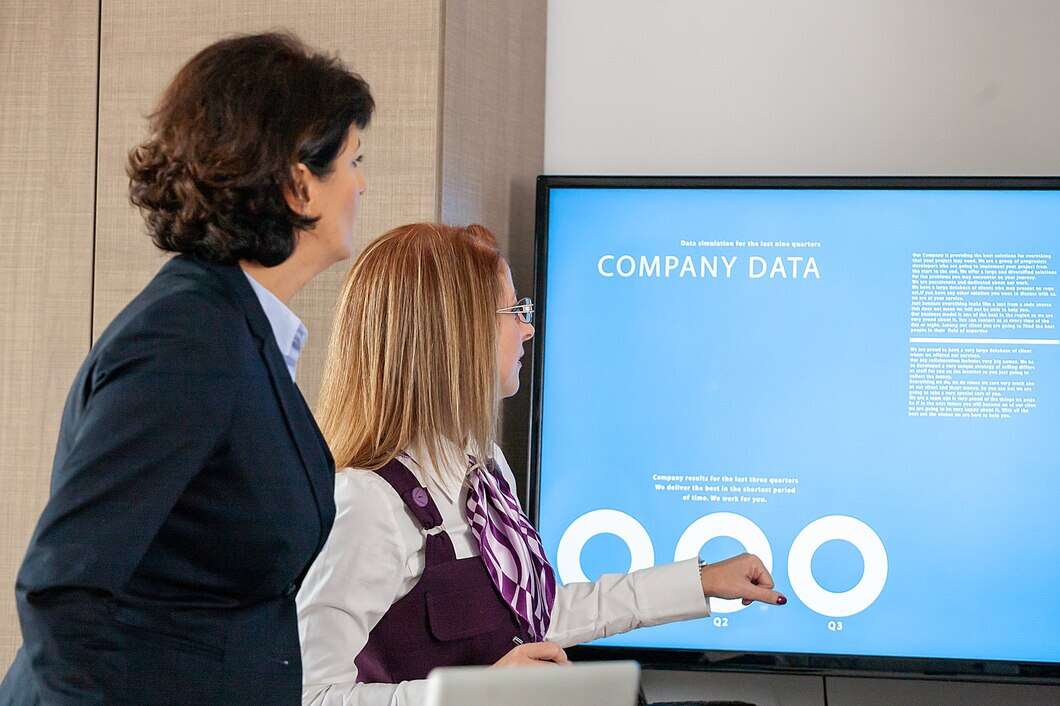Email format error
Email cannot be empty
Email already exists
6-20 characters(letters plus numbers only)
The password is inconsistent
Email format error
Email cannot be empty
Email does not exist
6-20 characters(letters plus numbers only)
The password is inconsistent


In the fast-paced world of business, presentations and meetings are the lifeblood of collaboration and decision-making. The traditional setup of a presenter standing in front of a static screen is evolving, thanks to the advent of portable touch screen displays. These versatile devices are transforming the way we engage with content, making presentations more interactive and meetings more dynamic. This blog post explores the practical ways to leverage portable touch screen displays to enhance your presentations and meetings, providing you with the tools to captivate your audience and streamline your workflow.
To appreciate the impact of portable touch screens, let's first look at how presentation technology has evolved.
The transition from printed slides to digital presentations was a significant leap, offering more flexibility and interactivity.
With the introduction of interactive whiteboards and smart TVs, the audience became more than passive viewers; they became participants in the presentation process.
Portable touch screen displays have taken this interactivity a step further, offering portability, ease of use, and advanced features that cater to the modern presenter's needs.
Understanding the benefits of using portable touch screens is crucial to maximizing their potential in your presentations and meetings.
The interactive nature of touch screen displays encourages audience participation, leading to more engaging and memorable presentations.
Portability allows you to set up and move your presentation space with ease, adapting to various meeting environments and requirements.
The ability to manipulate content in real-time fosters collaboration, enabling brainstorming and idea sharing directly on the screen.
Before you can harness the power of your portable touch screen, you need to set it up correctly.
Select a touch screen display that meets your requirements for size, resolution, battery life, and connectivity options.
Ensure your device is compatible with your presentation materials and can connect to your laptop or tablet for seamless content sharing.
Configure the display settings for optimal visibility and touch sensitivity, considering factors like ambient light and user distance.
Now that your device is set up, let's explore how to make your presentations interactive and engaging.
Use the touch screen to navigate through slides with ease, even zooming in on key points for emphasis.
Incorporate interactive elements like videos, quizzes, or polls directly into your presentation, utilizing the touch screen for a hands-on experience.
Enhance your presentation with real-time annotations, drawing attention to specific areas or making spontaneous edits.
Utilize remote control features to move around the presentation space freely while maintaining control over your content.
Portable touch screens are not just for presentations; they can also elevate the meeting experience.
Use the touch screen as a digital whiteboard for brainstorming sessions, allowing team members to contribute ideas visually.
Display the meeting agenda and keep track of time with a touch screen, making it easy to stay on schedule and manage discussions.
Review and edit documents collaboratively, with all participants able to see changes in real-time.
While portable touch screens are generally user-friendly, you may encounter some issues. Here are some common ones and how to address them.
If touch inputs are not registering accurately, recalibrate the touch screen according to the manufacturer's instructions.
Ensure all cables are securely connected and that your device is compatible with the touch screen's input options.
Keep your operating system and presentation software up to date to minimize the risk of software-related glitches.
Portable touch screen displays are powerful tools that can revolutionize the way you conduct presentations and meetings. By embracing their interactivity, portability, and collaborative features, you can create more engaging and productive sessions. Remember, the key to successful use of these devices lies in proper setup, creative application, and proactive troubleshooting. Embrace the potential of portable touch screens and elevate your presentation and meeting game to new heights.